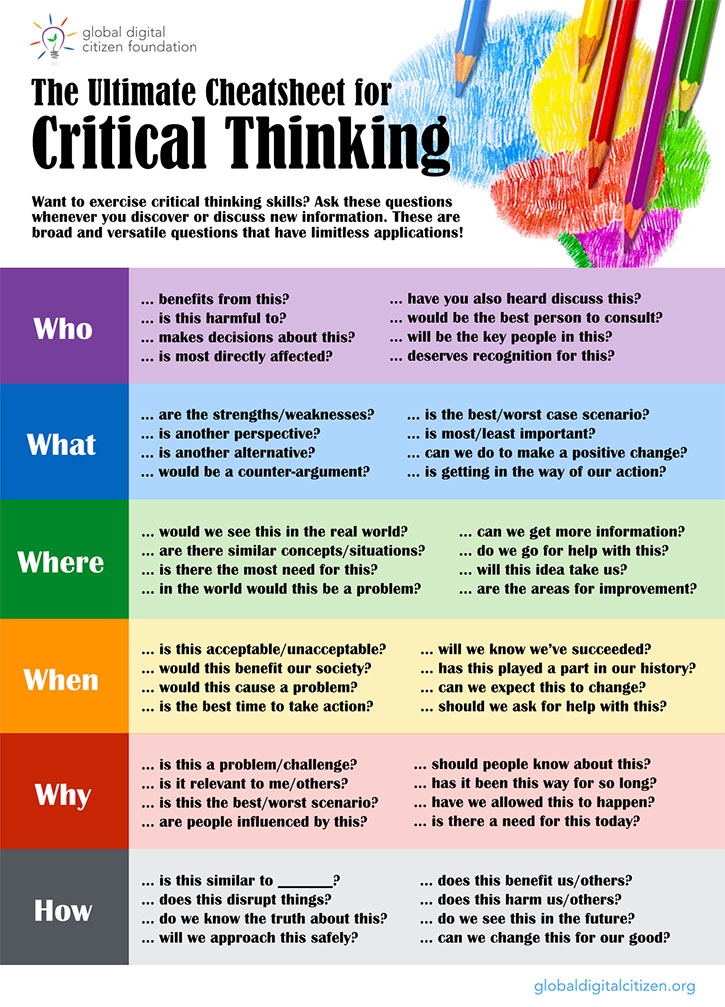Most employers are finding that college graduates are sorely lacking in soft skills, with one of the primary areas being critical thinking. In a 2016 survey of 76,000 managers and executives, professional services firms PayScale and Future Workplace reported that 60 percent of employers believe new college graduates lack critical thinking skills.
It is with this backdrop I want to focus on the topic of critical thinking and encourage you to step outside the traditional norm and push your thought process to consider new ideas. Much like chess requires planning and strategy thinking multiple moves ahead and considering all possible outcomes, we should continually be training our minds to creatively analyze and evaluate an issue from all sides. It is when we do this, that we can arrive at the best possible solution after weighing all the options.
“Education is not the learning of facts, but the training of the mind to think.” – Albert Einstein
I interface with a lot of people in projects and the occasional interview and I always get the proverbial ‘blank stare’ when I ask someone to give me an example of how they demonstrated critical thinking.
Webster’s defines critical thinking as “the objective analysis and evaluation of an issue in order to form a judgment.” However, I think it is far more than trying to make a summary judgement. This concept is centered around testing an idea to determine its value and what the impact will be. This approach is not out of arrogance, but a desire to validate the approach is in fact the best one and ensure multiple avenues have been pursued.
Why would I use critical thinking?
Critical thinking is a cornerstone to any visionary or valuable leader in a company. It demonstrates that you are focused on the end goal, while still being someone that can innovate and through cognitive analysis arrive at creative solutions.
How do you push your cognitive efforts and become an independent thinker instead of a follower that simply relies on others to set the direction? You constantly learn and ask questions. This is the best way to analyze something and think about it from different angles and then make an informed decision about how to proceed forward.
Ask Basic Questions and Question Basic Assumptions
You should be thinking about a topic or issue in an objective and critical way. Recognize that people will have cognitive biases toward a perspective or solution and use that to your advantage as you explore all options and viewpoints.
Do not allow emotions or preconceived ideas to cloud your judgement. Identify the different arguments related to the issue and evaluate each point of view to determine if they have merit. You should be able to recognize weaknesses in an argument and provide structured reasoning and support for the argument you wish to make.
Be willing to modify your stance if an alternate argument proves to be better than your previous stance. If you are stuck, flip things inside out and look at it from a reverse perspective. Design thinking excels at this by performing an outside-in approach to application design from a user’s point of view.
Here a some key questions that work well to spark the critical thought process:

Quantitative, Qualitative and Strategic Outcomes
When analyzing the situation, consider the opportunity cost and how the solution can be immediately relatable to the business. You may even need to develop new ways of measuring effectiveness, but the end result must be able to support the business objectives.
This also will provide you supporting arguments for a variety of questions when you decide on the approach to a situation. Managers will often ask tough questions and you need to be able to stand up to the scrutiny and defend your decision.
Know the Future…or at Least Have Some Foresight
Critical thinking means you have explored most outcomes possible to their ultimate end. This will not grant you the magical ability to know the future, but you will be able to explore outcomes, impact on various people or processes and articulate what this means to the business. For example, changing a process could impact positively or negatively customer satisfaction or moving a task to another country may result in loss of jobs.
Thorough analysis will help you demonstrate to management what the impacts will be, positive or negative, and through anticipation, you can adjust the plans to accommodate the outcomes appropriately.
Critical Thinking is a Learned Skill and Does Not Come Naturally
When practicing critical thinking, first recognize that it is not the natural thought process. This requires practice and a constant reminder to remove biases to evaluate various options. Develop the habit of critically evaluating all decision points and asking questions that drive to the heart of the issue.
This approach will help you develop from an individual that follows others into one that can take the initiative and lead a team to implement creative solutions.
Remember, there are an infinite number of solutions to problems. The only limit is our ability to use creative analysis to solve those problems.




